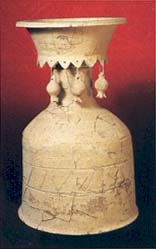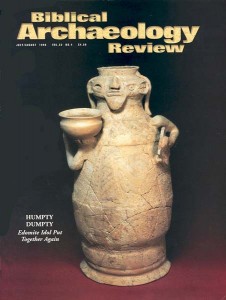Cult Stand Scorecard
Sidebar to: Smashing the Idols: Piecing Together an Edomite Shrine in Judah

Found throughout the Levant, knee-high cylindrical cult stands were probably used to make offerings to deities—of burning incense, perhaps, or libations. But how do you tell an Edomite stand from a Philistine, or Judahite, one?
The ancient Near East boasts a bewildering variety of cult stands made of stone, bronze or clay, some dating as early as the Chalcolithic Age (4500–3300 B.C.E.). Clay cylindrical stands, such as the ones shown here, arrive on the scene much later, in the early Iron Age (1200–586 B.C.E.). In general, cult stands appear to have been associated with religious rites—though some scholars suggest that they may also have served as vessels for rare fragrant oils used to anoint the body.

Three of the stands shown here, including those at top and above, were found in a pit adjacent to the shrine at ‘En Hatzeva, which the excavators have tentatively identified as Edomite. Why only tentatively? Partly because similar cult stands have turned up at Canaanite, Philistine and Phoenician sites, among others.
A ninth/eighth-century B.C.E. stand, shown below, is from the Judean hills near Hebron. Like several of the ‘En Hatzeva stands, it is hollow, with fenestrations (windows); a gallery of human heads peer out from under the stand’s overhanging fringe.
Already a library member? Log in here.
Institution user? Log in with your IP address.

